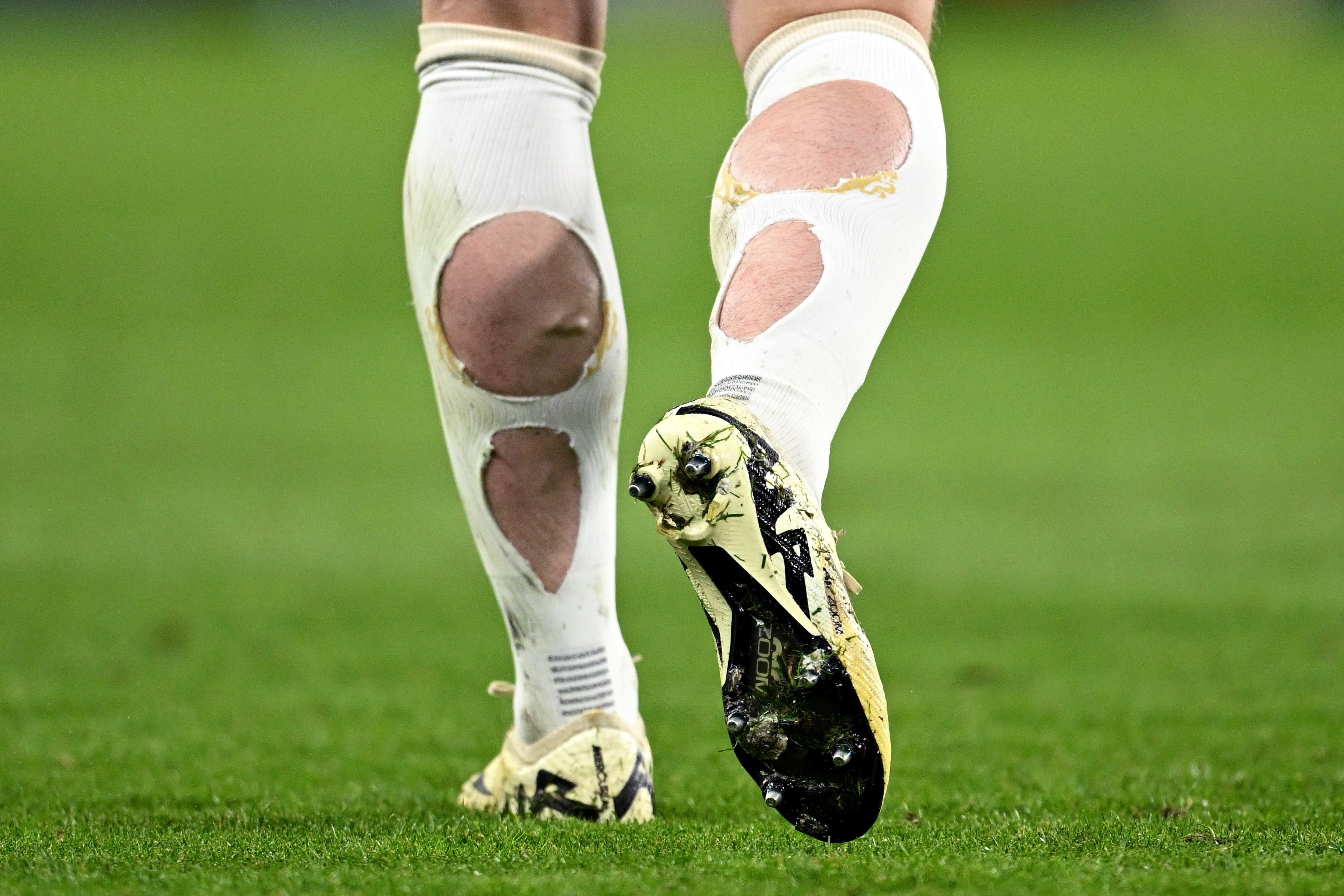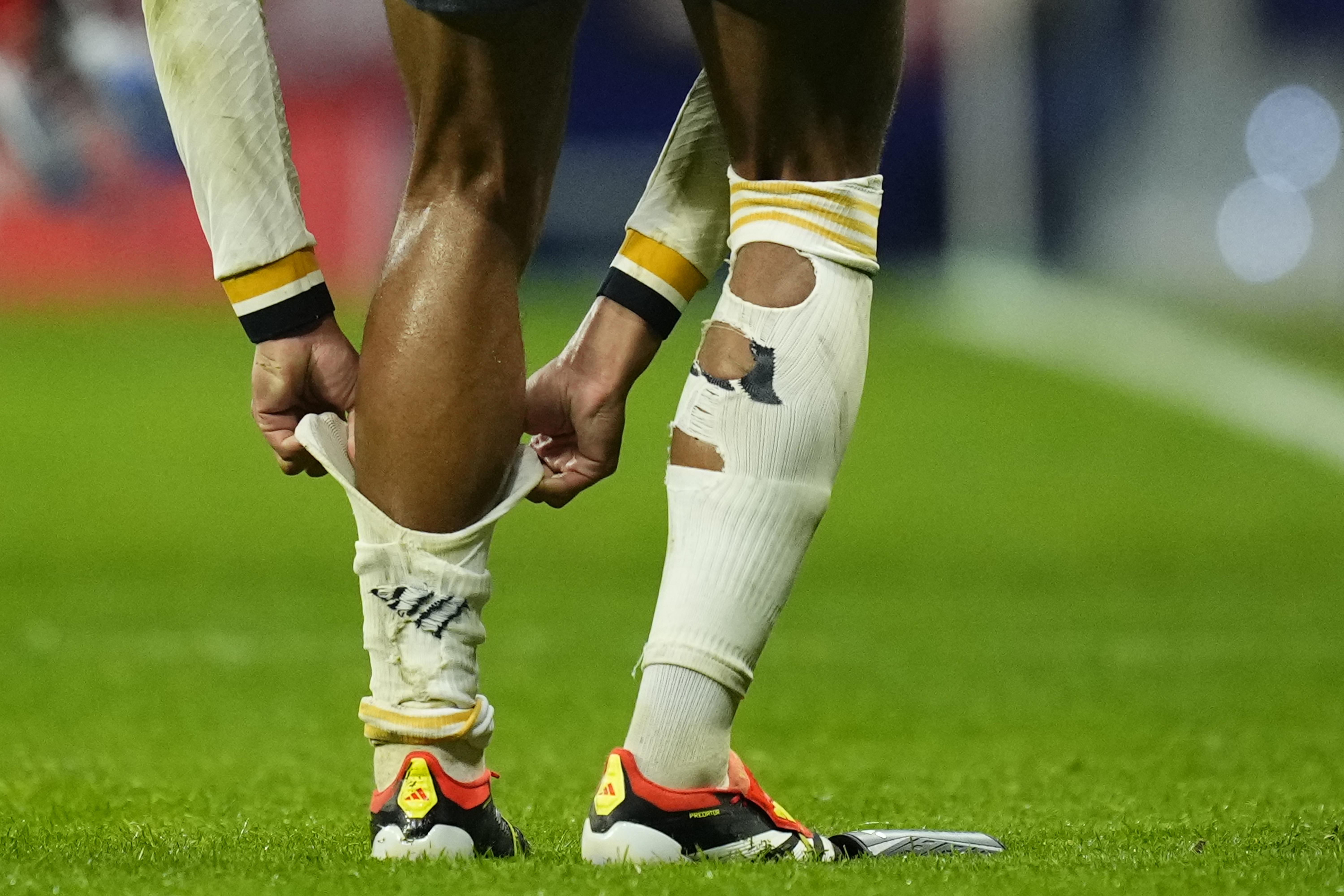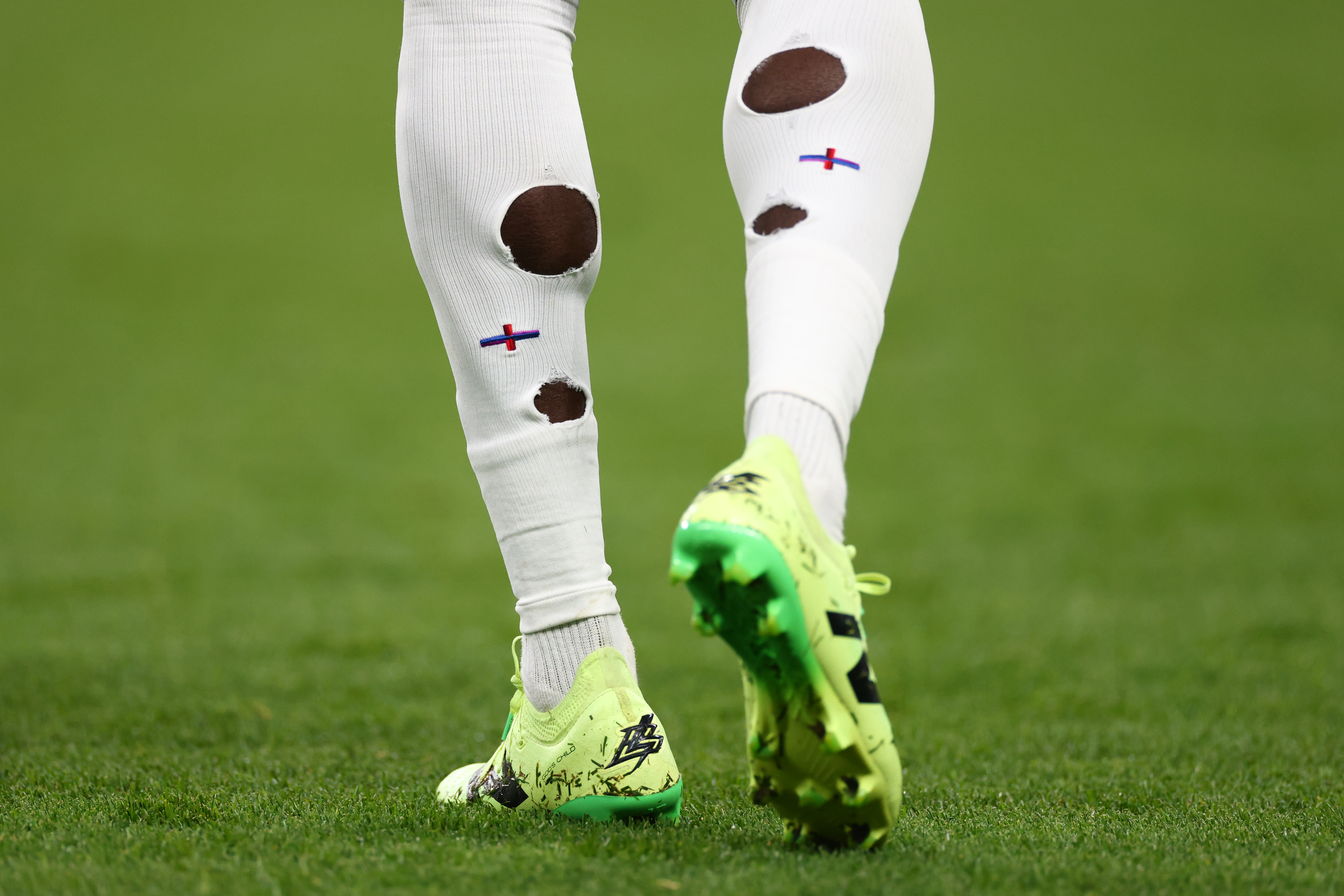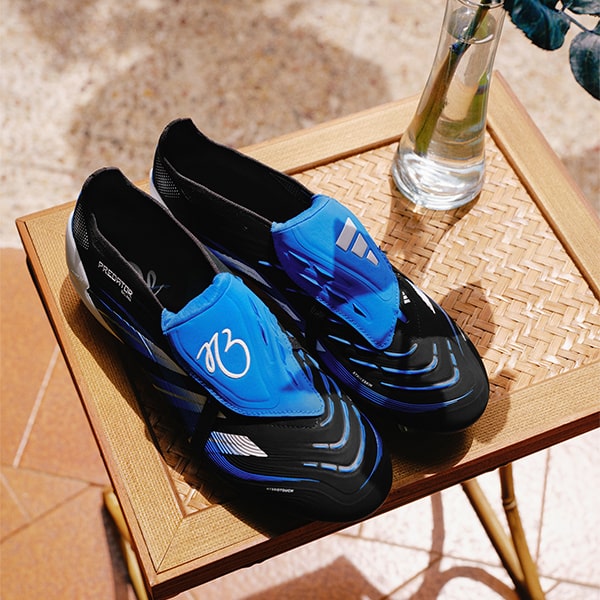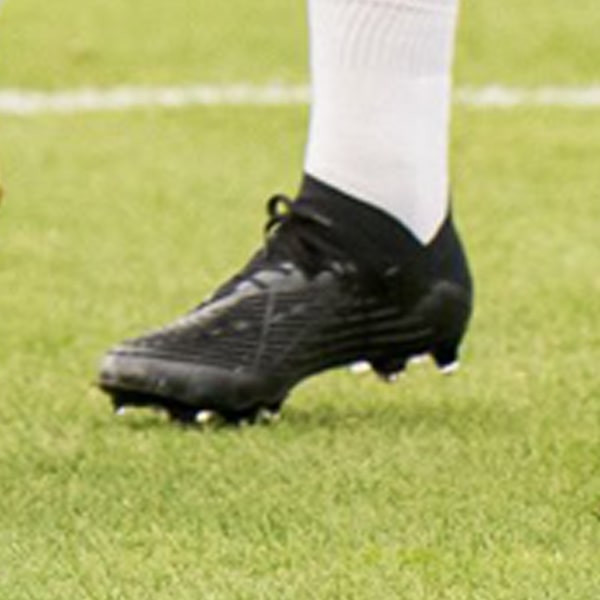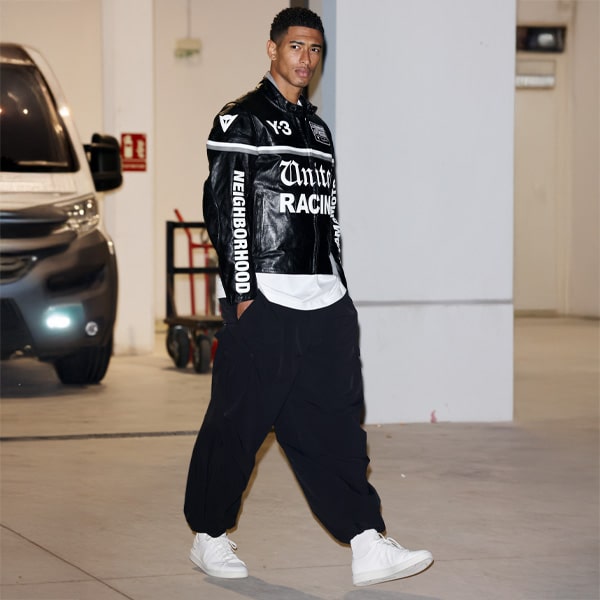To brands’ dismay, holey socks grace almost every pitch and obscure logos as players express their style and gain confidence. Is a total redesign needed?
If you watched Euro 2024, Copa América, the Olympics, and Wednesday night’s UEFA Super Cup, you may have noticed some of the top players sporting unmistakable manmade holes in their socks. It wasn’t a case of players or teams being economical or clinging to a pair of lucky socks because they’d gotten them that far; instead, it’s the latest trend among footballers. Not just in Europe but on pitches around the world. Jude Bellingham’s socks were probably the most notable—and noticeable: three or sometimes four evenly spaced holes cut into the calf area of each sock. These were new socks Bellingham, and many others, had intentionally taken scissors to. Which leads to the obvious question: Why?
“The socks are too tight at the position of the calf,” says Tobias Scheifler, head of teamsport and pro club at Hummel, which supplies the kits for Everton among other clubs. “It gives the player a very uncomfortable feeling when the socks give pressure on the muscles. Brands prefer to show socks in the shops that look perfect—more than caring about the comfort for the players. For some brands, the look of the soccer sock is more important than the functionality.”
Unlike the torn jeans trend of the 1990s, this holey sock trend among footballers has been brewing, in one form or another, for several years. It’s hardly just Bellingham who’s doing it. Arsenal winger Gabriel Martinelli cuts his socks; as does Wrexham midfielder Andy Cannon, as do Neymar of the Saudi Pro League, Arsenal’s Bukayo Saka and Man City’s Kyle Walker. But the “inventor” of the holey sock was probably former England fullback Danny Rose, who sported ripped socks during the 2018 World Cup finals in Russia (as did Neymar). Back then, fans figured the kitmen had taken the day off. Not at all. In fact, his and Neymar’s reasoning was the same as Bellingham’s: it allows for more circulation to their calf area and decreases the likelihood of cramping or soreness during a match.
FC Dallas captain Paul Arriola sums it up for most of holey sock converts. “One half, I’ll wear high socks with holes in them, just to try and let my calves breathe. In another half, if my calves are feeling tight, then I’ll wear low socks so that I don’t have any type of compression feeling on my calves. That’s why I do it.” While there are no rules against cutting holes in one’s socks, it’s debatable as to their health benefits. Doctor of physical therapy Raj Brar, of 3CB Performance, recently told Tifo Football that he knows of no medical evidence showing the benefits of cutting holes in one’s socks. But, he added, “One way of medically reducing pressure on the calves is the opposite of cutting holes in them, through using higher pressure compression socks in between games as a recovery measure.” This, he said, “will increase circulation and reduce swelling to varying degrees based on the level of pressure (tightness) of the sock.”
When Aston Villa’s Jack Grealish appeared looking almost sockless back in 2012, in his very short socks, many figured it was merely a stylistic choice on his part. Grealish, though, later explained that he only started wearing shorter socks because they’d shrunk after washing them and he could no longer get them above his calves. But when he played well in the shorter socks, being superstitious, he stuck with them. This short-sock look was also the same year that grip socks (non-slip socks) came onto the scene — courtesy mostly of Tottenham’s Gareth Bale, who wore a pair of Trusox that year. (Grip socks have nubby silicone dots on the bottom, which adhere to a shoe’s insole, preventing slipping and providing better traction). Then manufacturers started making tube socks and sock sleeves (which cover the lower leg but leave the foot area open for wearing other socks) for players.
Most football socks are made of polyester. While this material keeps its shape and retains less sweat, it can also feel tighter and more restrictive. Hence, taking out the scissors. “The sock needs to have tight fit at the foot and ankle but needs to have a big cross-stretch at the position of the calf,” says Scheifler. “At the height of the calf the sock needs to be wide because players wear shin guards under the sock and that, in combination with the massively trained muscles, means we need to create a big cross-stretch for the player not to experience pressure on his calves.” Sock manufacturers, though, understandably want their logo on the sock. So, for the past several decades the calf area has been the most ideal and often used spot for the logo placement. To get an optimal fixation of the design in the world of sock manufacturing, Scheifler explains, the stitches should be as small and tight as possible.
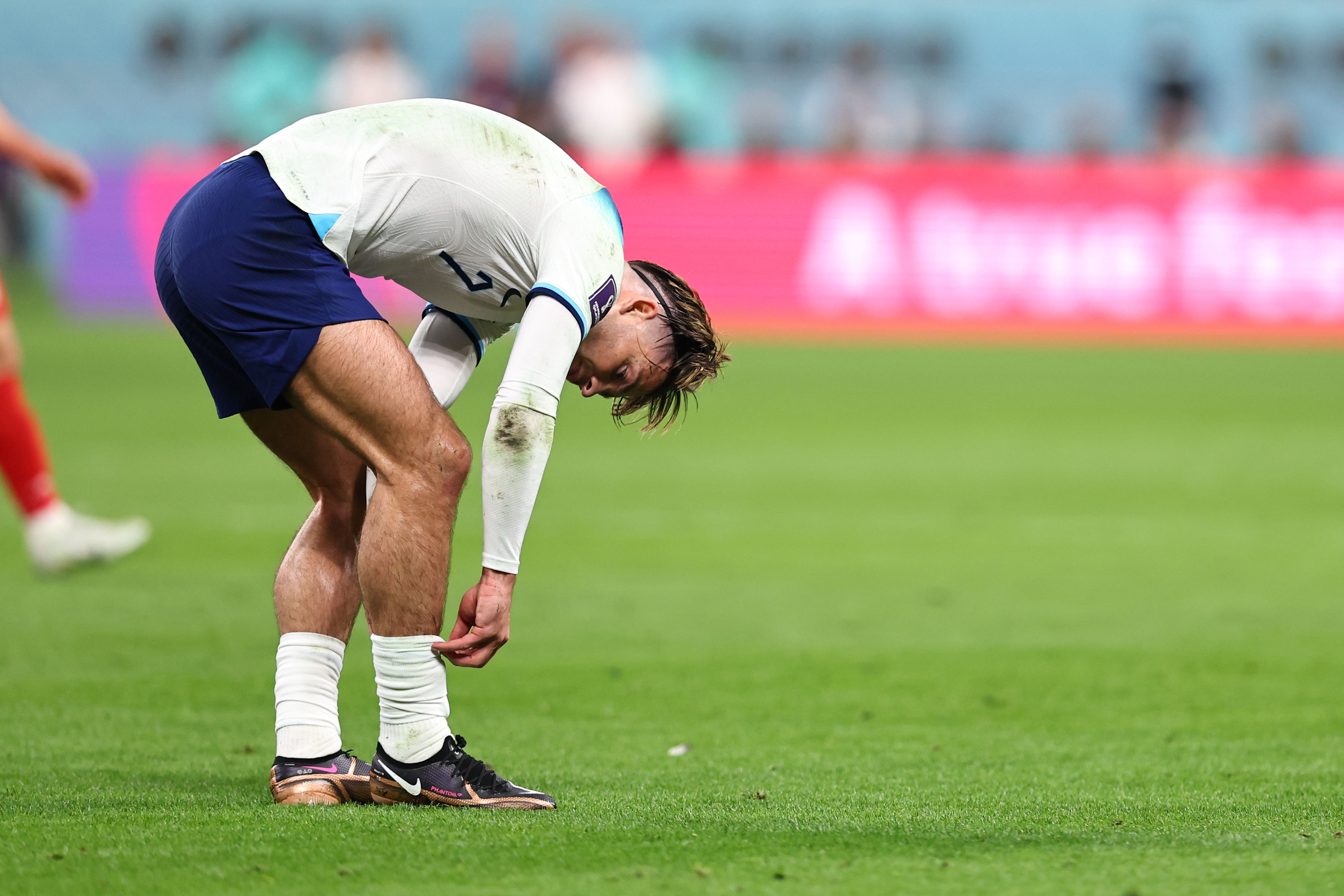
“The main reason,” says Jesse Ramirez, Dallas FC’s head athletic trainer, “is the belief that the sock is too tight around their musculature, and it gives them this sensation sometimes that their feet are getting a little tingly and numb or just actual pressure around the muscle belly itself. So, they do it to relieve some of that excess pressure and have more comfort, essentially.” Whether or not that’s medically valid, if it gives players an edge, they’ll take it. As the great American football player Deion Sanders once said, “If you look good, you feel good, if you feel good, you play good.” For many a player, a lot of it has to do with them liking the way the sock holes look, in turn giving them more confidence in their playing. Football is known to be a sport with much uniformity regarding what players may wear and socks are one area where they are able to express some slight individuality.
“It’s anecdotal,” Ramirez adds. “Each player is going to have a different perception with their sensory mechanism in their nervous system. So, it’s definitely different from player to player. But if the player feels a difference, I believe that it’s going to make a performance difference as well.” At elite level, where the slightest margin of difference means winning or losing, not worrying about one’s socks allows the player to focus more clearly on their game.
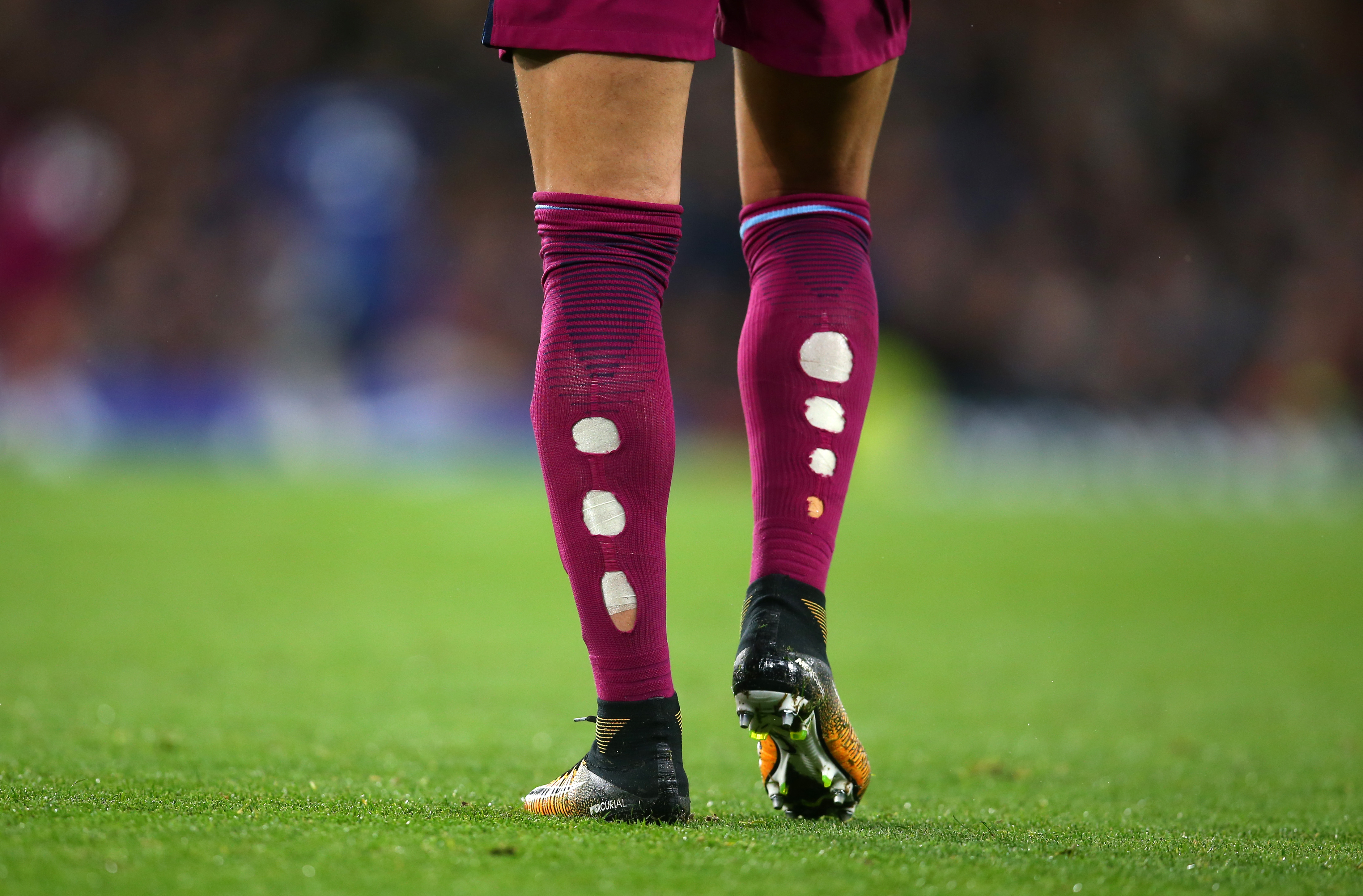
While the recent collaboration between adidas and Balenciaga wasn’t aimed so much at footballers as shoe (and maybe sock) fanatics, manufacturers from Nike and Umbro to New Balance and Puma are no doubt rethinking their sock philosophies. “To mitigate some of this whole cutting stuff that you’re seeing right now,” suggests Ramirez, “I would just design different circumferences of the actual tub portion of the sock so guys with skinny calves don't have socks laying down and guys with the big monster calves can have some of that relief from the excess pressure.”
As Scheifler points out, “knitting holes in the socks is technically not possible, not needed at all. The manufacturer that purchases the real ‘football sock’ machine and uses the right raw material will be able to bring the perfect soccer sock for the players. Hummel works with a manufacturer who, since 1980, mainly produces soccer socks. The machines are bought specifically for the production of a soccer sock and the yarns are high-stretch yarns. “The manufacturer,” adds Scheifler, “has to find a solution to match both requirements to produce the ‘optimal product’ for marketing purposes on one side and the comfort of the player on the other.”
